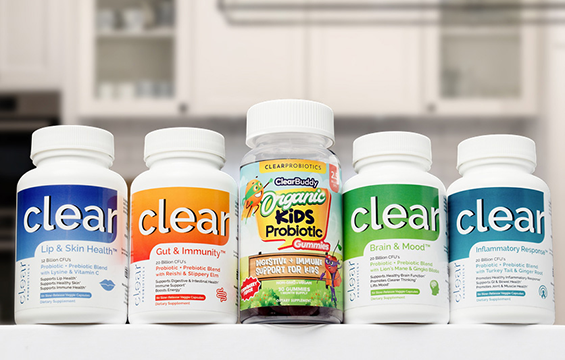Table of Contents
ToggleIntroduction
In the realm of modern medicine, Platelet-Rich Plasma (PRP) therapy has emerged as a highly effective treatment for healing injuries.
This cutting-edge procedure harnesses the innate regenerative power of the human body, offering hope and relief to countless individuals with various musculoskeletal ailments.
Definition of PRP Therapy
Platelet-rich plasma (PRP) therapy is a medical procedure that involves extracting a patient’s blood, processing it to concentrate platelets, and then injecting this concentrated solution into injured areas to facilitate healing.
Platelets are rich in growth factors and cytokines which play pivotal roles in the body’s natural healing processes.
These growth factors stimulate cell proliferation, angiogenesis (the formation of new blood vessels), and tissue repair.

Importance of Effective Injury Healing
Injuries are an unfortunate reality of life, affecting people from all walks of life regardless of age or occupation.
Sports-related injuries like tendon tears or degenerative conditions such as tendonitis require us to find effective treatments for injury healing.
Inadequate healing can lead to chronic pain, functional limitations, decreased quality of life, and even long-term disability.
This is where the significance of PRP therapy becomes evident – its ability to enhance the body’s innate regenerative capabilities offers hope for faster recovery times and improved outcomes.
The Science Behind PRP Therapy
PRP Composition and Function
Platelets are small, colorless blood cells that play a crucial role in clotting and wound healing processes. They also contain an abundance of growth factors and cytokines that contribute to tissue regeneration.
PRP is derived from a patient’s own blood through a process called centrifugation, which separates platelets from other blood components.
The resulting plasma contains a concentrated amount of platelets compared to regular blood.
The doctor injects the concentrated PRP solution directly into the injured area, providing a potent mix of growth factors that stimulate healing.
These growth factors include but are not limited to platelet-derived growth factor (PDGF), transforming growth factor-beta (TGF-β), vascular endothelial growth factor (VEGF), insulin-like growth factor 1 (IGF-1), and fibroblast growth factor (FGF).

Platelets: Growth Factors & Cytokines Source
Platelets act as natural reservoirs for various growth factors and cytokines within our bodies, making them an invaluable asset in promoting tissue regeneration.
Imagine your body is like a city and your cells are the buildings. Just like cities have architects and builders to make and fix structures, your body has these things called platelets.
Inside these platelets, there’s a bunch of useful stuff called growth factors and cytokines.
Consider these as tools and materials that repair the city when damage occurs.
Here’s a quick rundown of some of the main growth factors and what they do:
- PDGF – It’s like a factory manager. It tells cells to make more of a material called collagen. Collagen is like the bricks in our city, holding everything together.
- TGF-β – Think of it as a traffic cop. It directs where cells should go and helps with producing more building materials.
- VEGF – This one’s like the city planner for roads. It helps make new blood vessels, which are like the highways for nutrients and oxygen to travel around.
- IGF-1 – Think of this as the city’s safety inspector. It ensures that cells are doing well and staying alive.
- FGF – This one’s like a recruiter, calling in special workers called fibroblasts to make more collagen.
Now, there’s a cool treatment called PRP therapy. It’s like sending a bunch of skilled builders, tools, and materials straight to a damaged part of the city. This helps things get fixed up way faster!

The Process of PRP Therapy
Blood Sample Collection and Processing
The process begins with a standard blood draw from the patient’s arm, similar to routine blood tests.
The collected sample is then placed into a sterile, specialized tube that contains an anticoagulant to prevent clotting.
This initial step ensures that the platelets remain active and do not clump together.
Separating Platelets via Centrifugation
After the blood sample is collected, it undergoes centrifugation. Centrifugation involves spinning the blood sample at high speeds to separate its various components based on their densities.
During this process, the heavier red and white blood cells settle at the bottom of the tube while the plasma, which contains platelets, rises to the top.
Different centrifugation techniques can be employed to obtain varying concentrations of platelets in PRP preparations.
One common method is single-spin or soft-spin centrifugation, where a single cycle separates plasma from other components but results in lower platelet concentrations compared to other techniques.
On the other hand, double-spin or hard-spin centrifugation involves additional steps of separating and discarding certain layers, leading to higher concentrations of platelets within PRP.
Platelet Concentration in PRP Preparations
The concentration levels of platelets within PRP preparations can vary depending on numerous factors such as patient characteristics and medical conditions being treated.
Typically, PRP derived from these methods can contain anywhere from 2-10 times more concentrated platelets compared to baseline levels found in whole blood.
The concentration level plays a vital role in determining therapeutic outcomes since higher concentrations provide more growth factors and cytokines, which are crucial for tissue regeneration and repair.
Certain musculoskeletal injuries might benefit from higher PRP concentrations, while others may have optimal outcomes with lower concentrations.
PRP Therapy: Mechanisms for Injury Healing
Growth Factor-Driven Tissue Regeneration
PRP therapy harnesses the body’s natural healing abilities by utilizing the growth factors and cytokines present in platelet-rich plasma.
When injected into injured areas, the concentrated platelets release these growth factors, which initiate and accelerate the healing process.
The growth factors act as signaling molecules, attracting reparative cells to the site of injury and stimulating their activity.
One significant growth factor present in PRP is platelet-derived growth factor (PDGF).
By attracting cells such as fibroblasts and endothelial cells to the injured area, PDGF stimulates collagen synthesis and blood vessel formation, enhancing tissue regeneration.
Other growth factors such as transforming growth factor-beta (TGF-β) stimulate extracellular matrix production, further supporting tissue repair.
Enhancing Blood Supply to Wounds via Angiogenesis
Injured tissues require an adequate blood supply for proper healing.
PRP therapy stimulates angiogenesis—the formation of new blood vessels—to enhance blood flow to the injured area.
Growth factors within PRP directly influence endothelial cells lining blood vessels, promoting their proliferation and migration towards areas lacking sufficient vascularization.
One critical mediator involved in this process is vascular endothelial growth factor (VEGF).
VEGF promotes vasodilation and increases capillary density at the injury site, allowing improved nutrient delivery while facilitating waste removal from tissues undergoing repair.
PRP Therapy: Applications & Injury Effectiveness
Muscle and Bone Injuries
Musculoskeletal injuries, encompassing a wide range of conditions affecting the muscles, tendons, ligaments, and joints, can be particularly debilitating if not treated effectively.
PRP therapy has emerged as a promising treatment option for these injuries due to its ability to promote tissue regeneration and accelerate healing.
Tendonitis, tendinosis, and tendon tears are common musculoskeletal injuries where PRP therapy has shown remarkable efficacy.
Achilles Tendonitis Healing
Achilles tendonitis is an overuse injury characterized by inflammation of the Achilles tendon that connects the calf muscles to the heel bone.
This condition commonly affects athletes and individuals engaged in repetitive activities involving the lower extremities.
One notable advantage of PRP therapy in treating Achilles tendonitis is its potential to expedite healing by targeting the root cause of the injury.
PRP injections into the damaged area stimulate an influx of growth factors that facilitate tissue repair and regeneration.
Concentrated platelets in PRP release proteins like TGF-β and PDGF, promoting cell growth and collagen synthesis.
By promoting these essential processes, PRP therapy accelerates the healing time for Achilles tendonitis while reducing pain levels and improving overall function.
PRP Treatment Success for Tennis Elbow
Tennis elbow or lateral epicondylitis is a prevalent condition characterized by inflammation or micro-tears in the tendons that attach to the outside bony prominence (epicondyle) of the elbow.
Despite its name suggesting it primarily affects tennis players, this injury can occur in anyone engaged in repetitive arm and wrist movements.
The effectiveness of PRP therapy for tennis elbow lies in its ability to stimulate tendon healing and reduce inflammation.
By introducing concentrated platelets into the damaged area, PRP injections release a multitude of growth factors and cytokines that promote tissue repair.
These bioactive substances not only aid in cell proliferation but also modulate the inflammatory response, helping to mitigate pain and swelling associated with tennis elbow.
Clinical studies have reported positive outcomes with PRP treatment, showing improved pain relief, increased grip strength, and enhanced functional recovery for patients compared to traditional treatments or placebo interventions.
Rotator Cuff Recovery
Rotator cuff injuries are prevalent among individuals involved in repetitive overhead activities or as a result of traumatic events.
These injuries involve damage to the group of tendons surrounding the shoulder joint, potentially causing pain, weakness, and limited range of motion.
In recent years, PRP therapy has emerged as a valuable adjunctive treatment for rotator cuff injuries due to its ability to enhance tissue healing and improve overall outcomes.
This influx of growth factors acts as essential signaling molecules that trigger cellular activities necessary for tissue regeneration.
By promoting angiogenesis (formation of new blood vessels), cell migration, and differentiation, PRP therapy aids in restoring damaged tissues within the shoulder joint complex.

PRP Therapy in Injury Treatment Studies
Numerous scientific studies have been conducted to evaluate the efficacy of PRP therapy in treating a wide range of injuries.
These studies have shed light on the positive outcomes and benefits associated with this innovative treatment approach.
One study, published in the Journal of Orthopaedic Research, focused on evaluating the effectiveness of PRP therapy for Achilles tendonitis, a common sports-related injury.
The results showed that patients who underwent PRP treatment experienced significant improvements in pain reduction and functional recovery compared to those who received conventional treatments like physical therapy or corticosteroid injections.
Another notable study, published in the American Journal of Sports Medicine, examined the use of PRP therapy for rotator cuff injuries.
The researchers found that patients treated with PRP demonstrated higher rates of healing compared to those who received placebo or conservative treatments alone.
Key Implementation Considerations
Patient Selection Criteria
- Type and Severity of Injury:
- PRP therapy is particularly effective for musculoskeletal injuries like tendonitis, tendinosis, and tears. It’s crucial to match the patient’s specific injury with those where PRP therapy has shown significant benefits.
- Failed Conservative Treatment:
- Ideal candidates have previously tried and not found relief with treatments such as physical therapy or medication. PRP can serve as an alternative when these conventional methods don’t yield desired results.
- Overall Health Status:
- Patients should be free from underlying conditions that might affect blood clotting or wound healing. It’s also essential to ensure they aren’t on medications, especially anticoagulants, that could compromise platelet function and the overall effectiveness of PRP therapy.
- Age Factor:
- While PRP therapy doesn’t have a strict age cutoff, the healing potential may vary between age groups. Older patients might experience a slower healing rate due to their decreased cellular regeneration capabilities.
- Patient Expectations and Commitment:
- It’s imperative for patients to understand and have realistic expectations about the outcomes of PRP therapy. Proper education and clear communication about the procedure, its risks, and the anticipated recovery timeline are vital. Equally important is the patient’s dedication to adhering to post-treatment rehabilitation protocols to optimize healing and results.

Conclusion
The mechanisms of action underlying PRP therapy’s effectiveness in healing injuries are multifaceted.
The release of growth factors from platelet-rich plasma stimulates tissue regeneration, promoting cell proliferation, migration, and extracellular matrix production.
Understanding these mechanisms provides insight into why PRP therapy is increasingly utilized as a valuable treatment option for effective injury healing.












